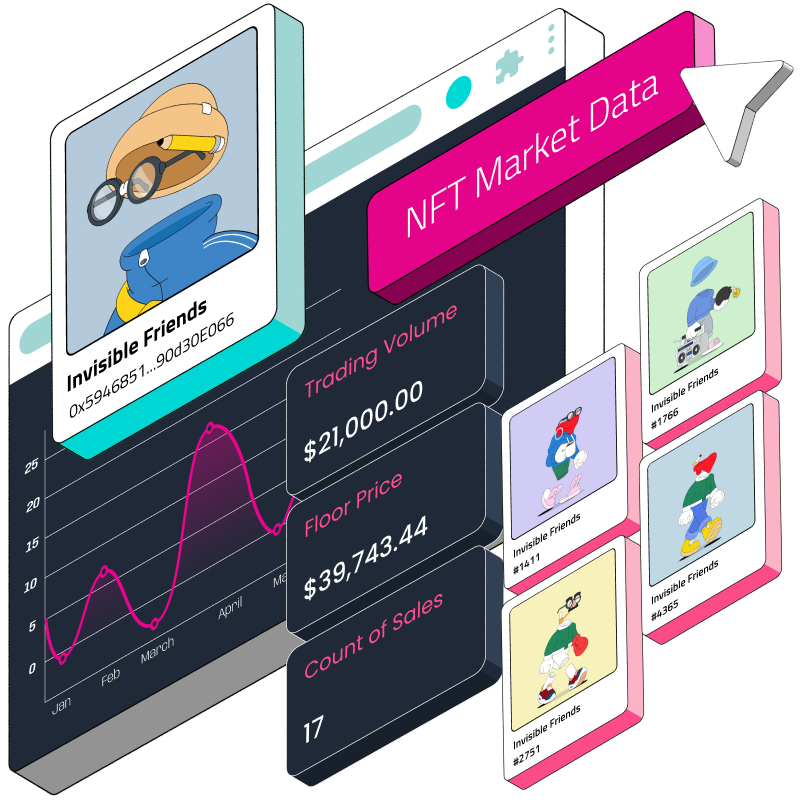- Get historical floor prices for a collection
- Get historical volume for a collection
- Get historical sales count for a collection
Introduction
In this tutorial, we delve into how to leverage the Covalent API to access vital historical data for NFT collections, including floor prices, volumes, and sales counts. This information is invaluable for developers building analytics platforms, marketplaces, or research tools in the blockchain domain. The Covalent API simplifies this process by providing a structured schema across different blockchains, ensuring uniformity in data retrieval regardless of the underlying blockchain network.
Why Developers Need This Data
Market Analysis: Understanding market trends, such as floor prices and sales volumes, is crucial for investors and collectors to make informed decisions.
Collection Valuation: Historical data helps in assessing the value of a collection over time.
Building User Trust: Transparent data regarding sales history and volume boosts user confidence in NFT platforms.
Cross-Blockchain Analysis: With Covalent's structured schema, developers can easily compare data across different blockchains, enhancing multi-chain analysis capabilities.
Covalent API Advantages
Ease of Use: Covalent provides a straightforward way to fetch detailed NFT data with minimal setup.
Structured Schema: The uniform data structure across various blockchains simplifies integration and analysis.
Comprehensive Data: Covalent offers a wide range of data points, including floor prices, volumes, sales counts, and more.
Covalent API Endpoints
The following endpoints return historical floor prices, sales volume and sales count for an NFT collection. Use of the Covalent API requires an API key. You can follow our Setup guide to get started.
Get historical floor prices for a collection
/v1/{chainName}/nft_market/{contractAddress}/floor_price/Commonly used to render a price floor chart for an NFT collection.
Get historical volume for a collection
/v1/{chainName}/nft_market/{contractAddress}/volume/Commonly used to build a time-series chart of the transaction volume of an NFT collection.
Get historical sales count for a collection
/v1/{chainName}/nft_market/{contractAddress}/sale_count/Commonly used to build a time-series chart of the sales count of an NFT collection.
Optional Query Parameters
days: Specify the time frame for the data (up to 365 days).quote-currency: Choose the fiat currency for the price quotes.
Utilizing the Covalent TypeScript SDK
For developers preferring TypeScript, Covalent offers an SDK that simplifies interaction with its API. The NftService class in the SDK provides methods corresponding to various NFT-related endpoints:
getNftMarketFloorPrice(): Retrieves the floor price for an NFT collection.getNftMarketVolume(): Fetches transaction volume data.getNftMarketSaleCount(): Gets the sales count of an NFT collection.
These methods enhance the development experience by providing type safety and autocomplete features, making it easier to integrate Covalent's API into TypeScript projects.
Follow the link for detailed instructions on getting started with the Covalent SDK.
Conclusion
The Covalent API offers a powerful, streamlined way for developers to access critical NFT market data. Its uniform data structure across blockchains and the convenience of a TypeScript SDK make it an excellent choice for building a wide range of blockchain analytics tools. Whether you're analyzing market trends, building user interfaces, or conducting research, the Covalent API provides the necessary data with ease and efficiency.
Happy coding!
